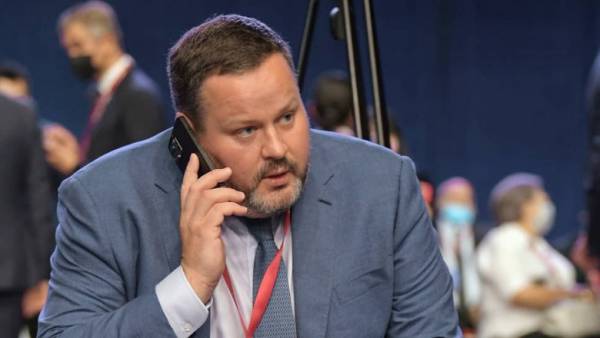
The Ministry of Labor proposes to introduce a new approach to & nbsp; accounting for the number of the poor in & nbsp; Russia. The corresponding draft government decree & nbsp; & mdash; on & nbsp; approval of the procedure for determining the boundaries of poverty & nbsp; & mdash; today will be presented at the & nbsp; meeting of the Russian Trilateral Commission (available from & nbsp; “ Kommersant '').
Recall that from & nbsp; 2021 in & nbsp; RF has a new procedure for determining the subsistence minimum & nbsp; & mdash; if earlier it was & nbsp; calculated as the cost of a consumer basket, then & nbsp; now, to & nbsp; to determine its size, the median income of the population is used. Median Income & nbsp; & mdash; this is the amount of income, relative to which & nbsp; half of the population has higher incomes, and & nbsp; & nbsp; half of & nbsp; & mdash; below. According to the proposal of the Ministry of Labor, for the next five years the cost of living is 44.2% of the & nbsp; median income. With this, the regional subsistence minimum should be established by the subjects in & nbsp; in accordance with the & nbsp; ratio of the ratio of the federal and & nbsp; regional subsistence minimum. The Ministry of Labor has planned to give the regions four years to & nbsp;The government predicts a decline in poverty to historic lows in 2023 
As stated then in the & nbsp; department, the transition from & nbsp; “ absolute '' to & nbsp; “ relative '' The poverty assessment approach reflects the practice of many developed countries and & nbsp; allows better consideration of changing consumption standards. Also, the new version of the calculation of the subsistence minimum will not & nbsp; allow these indicators to be reduced nor & nbsp; under any socio-economic conditions. If the median income grows below inflation, then & nbsp; in the law proposed by the department there is a rule that & nbsp; the living wage of the next year may not & nbsp; be lower than the current one (for more details, see Kommersant from & nbsp; 24 & nbsp; September 24, 2020).
At & nbsp; then & nbsp; the same time & nbsp; already in the & nbsp; period of discussion of the new method, the question arose about & nbsp; whether & nbsp; can the & nbsp; updated & nbsp; PM be used as a target indicator & nbsp; & mdash; doubts about & nbsp; this, in & nbsp; in particular, the Accounts Chamber reported. The & nbsp; Ministry of Labor then said that & nbsp; partially admit the correctness of the department and & nbsp; are ready to “ work out additional tools for assessing poverty '' together with & nbsp; Ministry of Economy and & nbsp; Rosstat & nbsp; & mdash; this, in fact, and & nbsp; happened.
As follows from the & nbsp; draft government decree, the department proposes to use the poverty line indicator as such a tool. In & nbsp; as the poverty line, the Ministry of Labor proposes to use the value of & nbsp; PM for & nbsp; fourth quarter of 2020 (the last calculated value before & nbsp; transition to & nbsp; new methodology) & nbsp; & mdash; 11.3 thousand rubles The poverty line will be calculated quarterly by Rosstat with & nbsp; taking into account the consumer price chain index for the & nbsp; corresponding quarter. As emphasized in the & nbsp; press service of the Ministry of Labor, the poverty line will be used only as a statistical indicator, and & nbsp; all support measures will continue to be assigned with & nbsp; taking into account & nbsp; PM.
The transition to such a combined model for assessing the level of poverty, according to the press service of the department, will avoid two problems.
First, assessing poverty with & nbsp; reliance on & nbsp; the cost of the consumer basket will resolve the issue of & nbsp; comparability of data until & nbsp; 2021 and & nbsp; after and & nbsp; will make it possible to assess the poverty rate in & nbsp; dynamics. Secondly, it excludes a situation where the measured level of poverty in a country & nbsp; grows with the growth of the economy and & nbsp; median income.
According to & nbsp; the words of Lilia Ovcharova, Vice-Rector of the Higher School of Economics, & nbsp; in many ways, the solution is a technical & nbsp; & mdash; we are not talking about & nbsp; fundamental changes in the & nbsp; practice of calculating the number of the poor in & nbsp; Russia. “ The crux of the matter is that & nbsp; the new, current method of determining the subsistence minimum (depending on the & nbsp; median) is such that & nbsp; with & nbsp; income growth, the median grows, therefore, with & nbsp; this approach, it is impossible to reduce poverty by & nbsp; two times. Moreover, it can even grow statistically. The minimum consumption of a basket does not & nbsp; depend on the amount of income & nbsp; & mdash; therefore, by using it, poverty can be reduced. The poverty line will be used to & nbsp; assess progress in & nbsp; poverty reduction, and & nbsp; cost of living & nbsp; & mdash; for & nbsp; purposes of social support. The solution is vulnerable, but & nbsp; the only correct of & nbsp; possible & raquo;, & nbsp; & mdash; she says.
With & nbsp; this debate about & nbsp; & quot; two indicators & quot; is apparently inevitable (see Kommersant-Online) & nbsp; & mdash; how inevitable and & nbsp; more complex methods of identifying poverty in & nbsp; state practice. Alternative 'one-dimensional' the approach to & nbsp; it, as a rule, leaves significant groups of the population outside the boundaries of social support.
Anastasia Manuylova